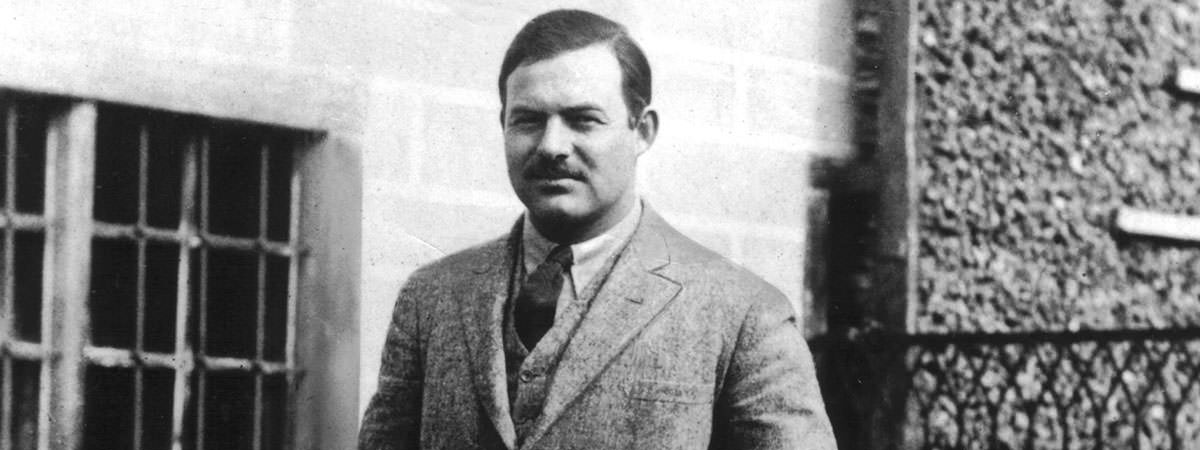Ernest Hemingway was an American author who is widely regarded as one of the finest writers of the 20th century. Born in an affluent family, he had fraught relations with his parents. After attending Oak Park and River Forest High School, Hemingway joined the Kansas City Star newspaper beginning his career as a journalist and writer. In 1923, his first book, Three Stories and Ten Poems, was published. Then his 1926 novel The Sun Also Rises established him as a major writer of his generation. The most famous work of Ernest Hemingway is Old Man and the Sea, which won him the Pulitzer Prize in 1953 and played a key role his winning the 1954 Nobel Prize in Literature. Ernest Hemingway married four times in his life and had three children. In later life, he had an issue with depression which led to his suicide in 1961. Know all about the Ernest Hemingway through his biography, interesting facts about him, his most famous works and his best quotes.
BIODATA
| BIRTH | July 21, 1899 – in an affluent suburb of Oak Park; close to the city of Chicago in Illinois, United States of America. |
| EDUCATION | Oak Park and River Forest High School (1913 – 1917). Did not pursue a college education. |
| OCCUPATION | Novelist, short story writer and journalist. |
| KNOWN FOR | Regarded as one of the greatest writers of the 20th century. Won the Pulitzer Prize for Fiction (1953) and the Nobel Prize in Literature (1954). His economical and understated style of writing had a huge impact on future writers. |
| FATHER | Clarence Edmonds Hemingway (1871 – 1928)– a well to do physician in Oak Park. |
| MOTHER | Grace Hall (1872 – 1951)– a former musician, opera singer and a music instructor by profession. |
| SIBLINGS | * Marcelline (1898 – 1963) – author and lecturer. * Ursula (1902 – 1966) * Madelaine (1904 – 1995) – musician. * Carol (1911 – 2002) * Leicester (1915 – 1982) – writer and novelist who also wrote a biography of Ernest Hemingway titled My Brother, Ernest Hemingway. |
| WIVES | * Hadley Richardson (m. 1921; div. 1927) – musician. * Pauline Pfeiffer (m. 1927; div. 1940) – journalist. * Martha Gellhorn (m. 1940; div. 1945) – novelist, travel writer and journalist. Regarded as one of the finest war correspondents. * Mary Welsh Hemingway (m. 1946 – d. 1986) – author and a journalist who covered the Second World War. She remained married to Ernest till his death in 1961. |
| CHILDREN | * Jack Hemingway (1923 – 2000) – fly fisherman, conservationist and writer. * Patrick Hemingway (born 1928) – author and safari guide. * Gregory Hemingway (1931 – 2001) – physician and writer. Had a difficult relationship with his father due to his struggle with gender dysphoria. |
| DEATH | July 2, 1961 (aged 61) – committed suicide by shooting himself after suffering from depression and paranoia. |
| PLACE OF DEATH | Ketchum, Idaho, United States |
BIOGRAPHY
Formative Years and Family
Ernest Hemingway was named after his maternal grandfather Ernest Miller Hall and was the second born child among five other siblings. At an early age Ernest was forced into playing the Cello on his mother’s insistence, something which he would later admit helped him in his writings. Among his most cherished childhood memories would be the family’s summer trips to Walloon Lake, near Petoskey, Michigan. It is here that the young Hemingway learned how to hunt, fish and camp in the woods from his father; early experiences that instilled in him a life-long passion for outdoor adventure and travelling.
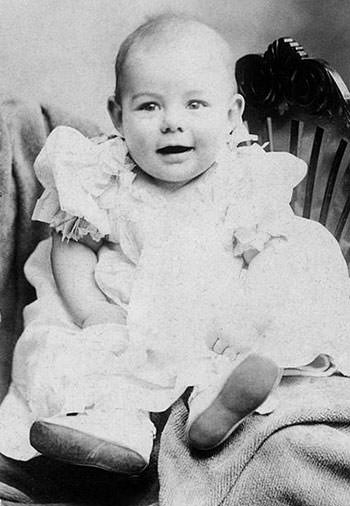
Later revelations from his sister Marcelline and other sources gave more insight into the Hemingway family and Ernest’s fraught relations with his parents. Marcelline was 18 months older than Ernest but since their mother Grace Hemingway had always wanted twins, she decided to dress up Ernest in little girl clothes to match Marcelline and began to treat them as twin girls. Though dressing up infants alike was not unusual in those times, Grace took her fancies to the extreme. The obsession lasted for some time and Marcelline was even made to drop a year so that both the children could go to the same grade.

Ernest’s third wife Martha Gellhorn would later attribute Ernest’s difficulties with women to his relationship with his mother. She stated: “Deep in Ernest, due to his mother, going back to the indestructible first memories of childhood, was mistrust and fear of women.” Ernest also struggled to connect with his father Clarence, who was a strict disciplinarian and would often beat him with a razor strop. These early impressions would have a lasting impact on Hemingway.
Early writing career and joining the Red Cross
In 1913, Ernest Hemingway joined the Oak Park and River Forest High School as a freshman. He had little interest in the English language at the time and aspired to be a doctor. Good grades in the language along with the inspiration and guidance from teachers would however help him develop a passion for writing in the coming years. At school he would prove himself as a decent athlete in track and field events and played varied sports like boxing, water polo and football. He also performed in the school orchestra for two years with his sister Marcelline. During his last two years, Ernest Hemingway regularly contributed and edited the school’s literary magazine and newspaper (Trapeze and Tabula), mostly writing about sports.
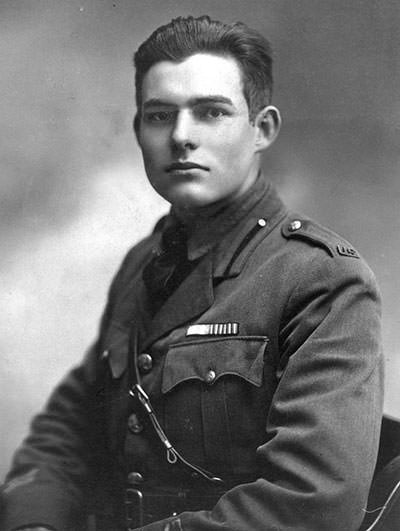
In his senior year, Ernest began thinking about college but the plans soon dissipated as he became more interested in joining a newspaper. In April 1917 as he prepared for his high school graduation, the United States declared war and joined the Allied powers (Britain, France and Italy) in the First World War. In October the same year Ernest moved to the city of Kansas, and with some assistance from his uncle Tyler joined as a cub reporter in the Kansas City Star. Though this job stint lasted only a few months it would play a pivotal role in the writer’s career. The Star’s style guide which advocated short precise sentences and paragraphs, use of vigorous English and positive writing would lay the foundations of Ernest’s own writing style which would further inspire a generation of writers.
The First World War Experience
During his time with the Kansas City Star, Hemingway was also pursuing his effort to join the Great War and serve his country. In December 1917, after being rejected by the U.S. Army for poor eyesight, Hemingway got an opportunity with the Red Cross, who were actively recruiting to aid the efforts on the Italian Front. Hemingway soon joined the organization as an ambulance driver on the Italian Front, finally setting sail for Italy in May 1918 from New York. A month later in Milan, Italy, his first assignment would be a rescue operation to retrieve the shredded remains of female workers at a site of explosion; an incident he would later describe in his 1932 non-fiction book Death in the Afternoon. Ernest would be later posted at the Red Cross base camp in Fossalta, a town in Venice. Here on July 8, he was seriously wounded by shrapnel from enemy mortar fire, while he was bringing chocolate and cigarettes for the men at the front line. Despite his wounds Hemingway assisted Italian soldiers to safety, and was awarded for this brave action with the Italian War Merit Cross, the Croce al Merito di Guerra.
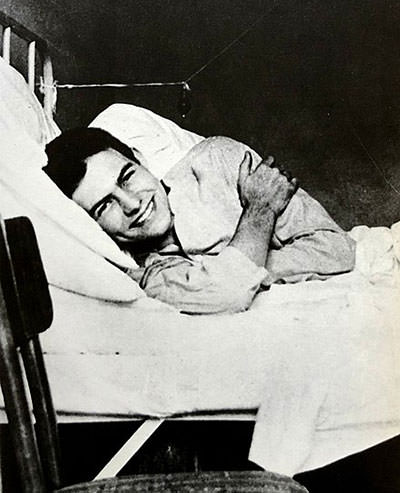
Hemingway spent the next six months in the Red Cross Hospital in Milan, recovering from his wounds. It was also the time he fell in love with Agnes von Kurowsky, a Red Cross nurse who was seven years his senior. Returning to America in January 1919, Hemingway hoped that Agnes would join him in some time and the couple would wed, but instead he would only receive the news of her engagement in March. The affair with Agnes left Hemingway emotionally scarred, she would later inspire the character of Catherine Barkley in his 1929 novel A Farewell to Arms.
Life in Paris
Post war, Hemingway started working for the Toronto Star as a freelancer and staff writer. He moved to Chicago in December 1920 and also began working as an associate editor for the Cooperative Commonwealth. At this time he became acquainted with Elizabeth Hadley Richards through common friends and began his courtship with her. Hadley like Agnes was seven years elder to Hemingway, and though there were obvious similarities she had a childishness about her which Agnes lacked. The couple were married on September 3, 1921. A few months after his marriage Hemingway was hired as the foreign correspondent for Toronto Star to cover the Greko-Turkish war, and moved to Paris along with his newly wedded wife.
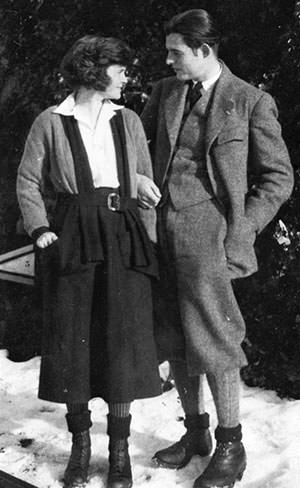
In Paris, Hemingway became acquainted with the American expatriate writer, art collector and modernist Gertrude Stein. Her Paris salon was the melting pot of modernist art, literature and culture, where Hemingway would meet up with personalities like Pablo Picasso, F. Scott Fitzgerald, Sinclair Lewis, Joan Miro, Ezra Pound, Sherwood Anderson and Henri Matisse. Stein and Anderson assisted and influenced Hemingway during his early years in Paris, while he shared a special bond with Ezra Pound who would further introduce him to the Irish writer James Joyce.
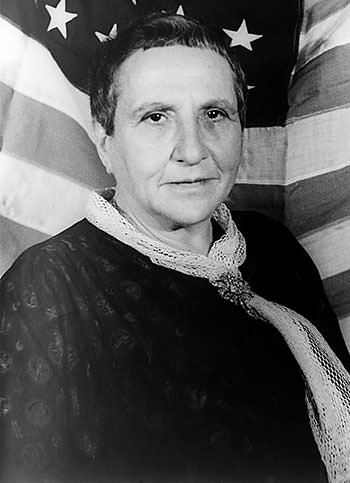
In 1923, Hemingway’s first book, Three Stories and Ten Poems, was published. The same year in October, Hadley Richardson gave birth to his first son Jack Hemingway. The child was nicknamed Bumby and Stein was chosen to be his godmother. During this time, while on his visit to the Festival of San Fermín in Pamplona, Spain, Hemingway developed his lifelong passion for bull fighting. In 1925, his first well known work In Our Time was published while his developing friendship with F. Scott Fitzgerald, inspired Hemingway to start working on his own novel.
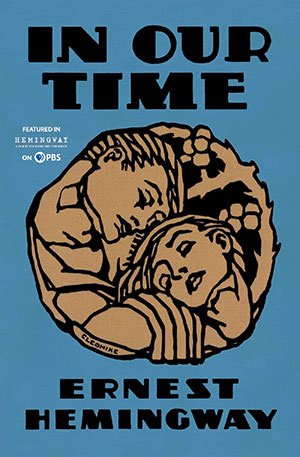
1926 marked a pivotal shift in the life and career of Hemingway. It was a time when Hemingway had grown weary of his Paris friends and attacked them in his lesser known parody novel The Torrent of Spring. The controversial book led him to his new publisher and drifted him away from his familiar social circle. Later in the year the publication of The Sun Also Rises became the first step in establishing him as a noteworthy writer of his generation. During the work and publication of the novel, Hemingway also started an affair with an American journalist Pauline Pfeiffer. The relationship led to Hemingway’s second marriage in May 1927 to Pauline and his conversion to Catholicism. This was after he formally separated from his first wife Hadley. Later in 1927, a collection of Hemingway’s short stories Men without Women was released which included his famous boxing story Fifty Grand. In early 1928, Ernest and Pauline had decided to leave Paris for good. They soon travelled to Kansas City, where their first son (Hemingway’s second) Patrick was born on June 28, 1928.
Key West and the Spanish Civil War
After his departure from Paris, Hemingway never lived in a big city and moved to the island of Key West in Florida, USA. In 1929, he went on to produce one of his most famous works A Farewell To Arms. Set in the backdrop of the First World War, the novel was centered around the love affair between an American expatriate Frederic Henry and an English nurse, Catherine Barkley. The book was a bestseller and established Hemingway as a modern American writer of considerable stature. The early 1930s saw the birth of Hemingway’s third son Gregory with Pauline, publication of his bullfighting treatise Death in the Afternoon and his travels to Africa; which would provide material for stories like Green Hills of Africa and The Snows of Kilimanjaro.
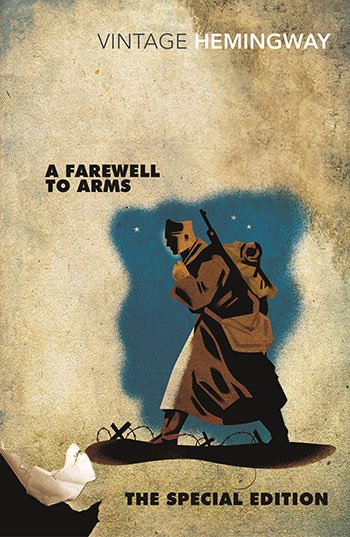
In 1937, Hemingway took up the assignment for the North American Newspaper Alliance and left for Spain to cover the Spanish Civil War. He raised money for the Republicans in their struggle against the Nationalists under General Francisco Franco, and he wrote a play called The Fifth Column (1938). During this time he also developed a romantic relationship with travel writer and journalist Martha Gellhorn, a relationship which would culminate in his third marriage and second divorce in 1940. The Spanish War also provided Hemingway material for his next major novel For Whom the Bell Tolls which was released in 1940. The book would go on to sell more than half a million copies and earn him a nomination for the Pulitzer Prize.
Move to Cuba and the Second World War
Post the Spanish Civil War, Hemingway went on to purchase the Finca Vigía (“Lookout Farm”) in Havana Cuba and further covered the Japanese invasion of China. In 1944, during the last years of the Second World War, he was sent to London as a journalist, where he met Time magazine correspondent Mary Welsh and was immediately attracted towards her. Ernest and Martha would end their deteriorating marriage in 1945, paving way for Hemingway’s fourth marriage with Mary Welsh in 1946.
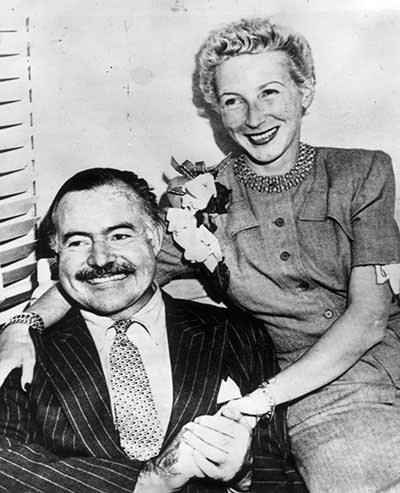
During World War 2, Hemingway accompanied the troops as a war correspondent in the Normandy Landings of June 1944. In July he attached himself to the 22nd Infantry Regiment marching towards Paris and witnessed the liberation of Paris in August 1944. Later that year, he observed heavy fighting in the Battle of Hürtgen Forest and had himself driven to Luxembourg in spite of illness to cover The Battle of the Bulge, where he needed to be hospitalized due to pneumonia. He would later be recognized with the Bronze Star for his bravery in 1947, for having been “under fire in combat areas in order to obtain an accurate picture of conditions”.
Nobel Prize
The period following WW2 saw Hemingway becoming prone to accidents and falling into depression after the death of several of his close friends. In 1948, on a trip to Venice with Mary, he become infatuated with the 19 year old Adriana Ivancich, which inspired his 1950 novel Across the River and into the Trees. The negative reviews of the book would prompt Hemingway to draft the Old Man and the Sea in eight weeks, and claim “the best I can write ever for all of my life”. The book was well received and would make him an international celebrity, while finally winning him the Pulitzer Prize in 1953 and the Nobel Prize in 1954.
Final Years
In 1954, while travelling to Africa, Hemingway was seriously wounded in two successive plane crashes. In the following years of his life in Cuba he would be mostly bedridden facing several ailments including blood pressure, liver disease and arteriosclerosis. In 1959, Hemingway completed A Moveable Feast, a memoir of his days in Paris; and visited Spain to write a series of articles on bullfighting for the Life Magazine. By now he was having issues in organizing his writing and was suffering from falling eyesight.
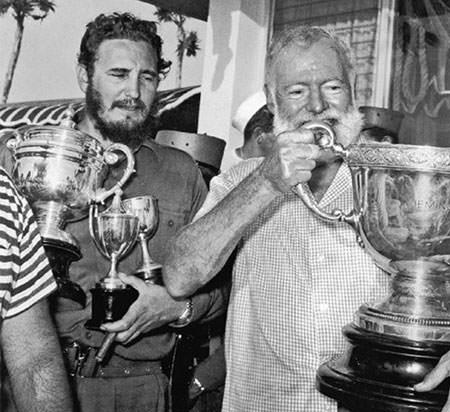
In the following year, Hemingway and Mary were forced to leave Cuba when it’s new leader Fidel Castro seemed intent on nationalizing property owned by Americans and other foreign nationals. They moved to a house in Ketchum, Idaho. In early 1960s, Hemingway’s mental condition was also further deteriorating. He had bouts of anxiety and depression, and was often treated with electroshock therapy at the Mayo Clinic in Minnesota. In April 1961, he was hospitalized once again due to his mental condition, however this time on his return to Idaho, Hemingway decided to end his own life on 2nd of July 1961.
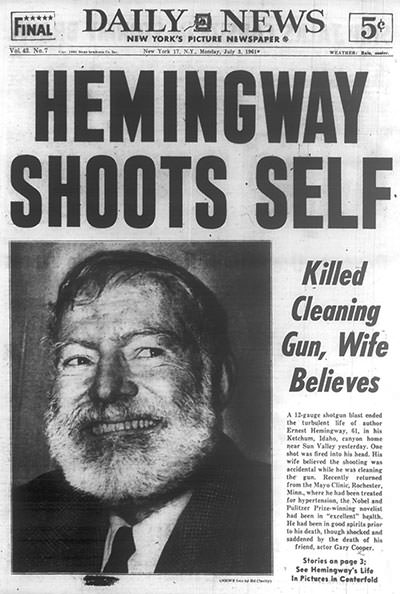
Main Sources
Oliver, Charles M. (1999). “Ernest Hemingway A to Z”. P139-140. Facts on File.
Reynolds, Michael (2000). “Literary Masters Vol 2 – Ernest Hemingway”. Gale Group Detroit.
Kert, Bernice (1983). “The Hemingway Women”. P83-90. W.W. Norton and Company.
Mellow, James R. (1992). “Hemingway – A life without Consequences”. P67, 69-85, 316-318 Addison Wesley Publishing Company.
Walsh, John (Oct 23, 2011). “Being Ernest: John Walsh unravels the mystery behind Hemingway’s suicide”. Independent.
Sanford, Marcelline Hemingway (1962). “At the Hemingways: a family portrait.”
Boyle, Louise. 19 Dec, 2011. “Ernest Hemingway’s granddaughter returns to author’s Cuban home to mark 50th anniversary of his suicide”. Dailymail.co.uk.
“Star style and rules for writing”. KansasCity.com.
INTERESTING FACTS
READ IN DETAIL
#1 His mother liked to dress him as a girl.
#2 He was the de facto bodyguard for James Joyce.
#3 Hemingway wrote a satirical novel targeting his own friends.
#4 He may have deliberately manoeuvred his way out of a contract.
#5 He made a plan to battle German U-Boats during WW2.
#6 He was formally booked for the contravention of the Geneva Convention.
#7 Hemingway worked for both the Soviet and US Intelligence.
#8 He wanted to ‘liberate’ the Ritz Hotel from the Germans.
#9 Hemingway’s scripts were retrieved from Cuba with the help of the US government.
#10 Hemingway gave himself the nickname “Papa”.
MOST FAMOUS WORKS
READ IN DETAIL
| Rank | Title | Published | Type of Work |
|---|---|---|---|
| #10 | Death in the Afternoon | 1936 | Non Fiction |
| #9 | The Snows of Kilimanjaro | 1936 | Short Story |
| #8 | The Short Happy Life of Francis Macomber | 1936 | Short Story |
| #7 | A Moveable Feast | 1964 | Non Fiction |
| #6 | The Killers | 1927 | Short Story |
| #5 | For Whom the Bell Tolls | 1940 | Novel |
| #4 | Hills Like White Elephants | 1927 | Short Story |
| #3 | A Farewell to Arms | 1929 | Novel |
| #2 | The Sun Also Rises | 1926 | Novel |
| #1 | The Old Man and the Sea | 1952 | Novel |
FAMOUS QUOTATIONS
“There is no hunting like the hunting of man, and those who have hunted armed men long enough and liked it, never care for anything else thereafter.”
Hemingway on Hunting
“In order to write about life first you must live it.”
Hemingway on Writing
“Happiness in intelligent people is the rarest thing I know.”
Hemingway on Happiness
“Courage is grace under pressure.”
Hemingway on Courage
“The way to make people trust-worthy is to trust them.”
Hemingway on Trust
“There is no friend as loyal as a book.”
Hemingway on Books
“When people talk listen completely. Don’t be thinking what you’re going to say. Most people never listen.”
Across the River and into the Trees
“The world breaks every one and afterward many are strong at the broken places.”
A Farewell to Arms
“Every day is a new day. It is better to be lucky. But I would rather be exact. Then when luck comes you are ready.”
The Old Man and the Sea
“You can’t get away from yourself by moving from one place to another.”
The Sun Also Rises

